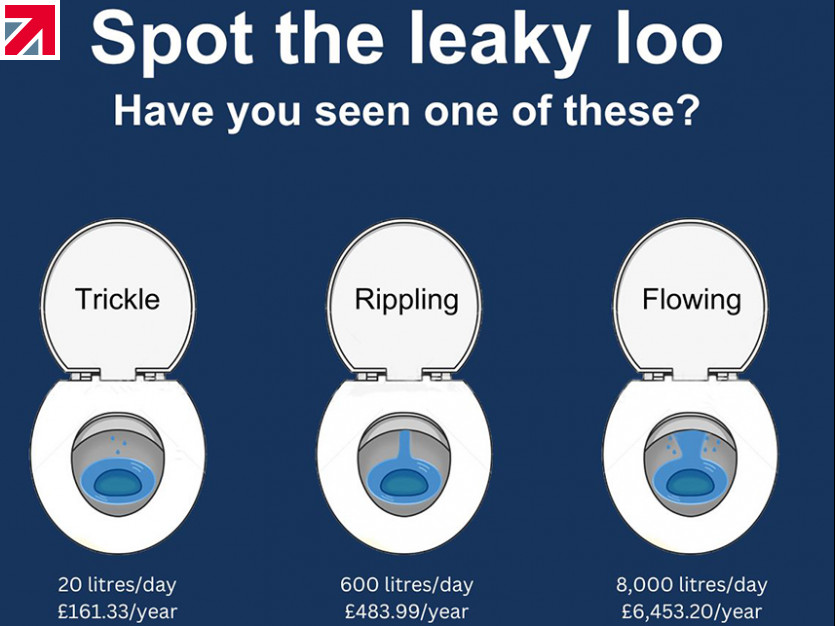Stopping leaks will save money…
Water is becoming scarce. Many regions around the world are already facing water scarcity or stress, meaning they lack sufficient water resources to meet the demands of their populations.
Here in the UK, we have a water crisis that is hiding in plain sight… The Leaky Loo!
Having a leaky loo may not sound like a crisis, and on an individual basis it is more of an inconvenience than a crisis, but taken as a whole, the numbers are staggering. Across the country it is estimated that at any one time over 1.5 million toilets are leaking. That is enough fresh water leaking down the pan to fill over 4 million baths EVERY DAY.
So, what is causing the problem? The majority of leaky loo’s leak from either the inlet or outlet valve. The ‘Leaky Loo’ report has confirmed that ‘in toilets that were identified as leaking, 81 percent contained flush valve mechanisms’ Flush valves work by pressing a button that lifts a sealing washer off the cistern outlet hole, rather like removing a plug from a bath allowing water to drain into the pan. The constant action of raising and lowering of the sealing washer is responsible for most flush valve leaks as debris or limescale builds underneath the washer to prevent it from sealing. When this happens, water trickles into the pan and on average, wastes approx. 215 litres of water per toilet per day.
How did we get here?
In 2001 the Water Regulations in the UK underwent some changes. Along with allowing dual flush toilets; for the first-time flush valves were allowed to be fitted in a toilet instead of a syphon. Prior to 2001 the leak free toilet syphon was the undisputed king of UK toilet flushing! There were different reasons for the change in regulations, primarily water saving was the goal along with harmonisation with European Regulations and the possibility to flush by pressing a button.
BEFORE the regulations were changed in 2001 it was known that unless they are regularly maintained, flush valves do eventually leak. It was thought at the time that leaking valves would be repaired before the leak got too severe but evidence would suggest that this is not the case and leaking valves continue to waste an eyewatering amount of water every day.
A readymade solution
So, is there a solution to the leaky loo crisis? If only there was a technology that existed that did the same job as a valve but didn’t leak! Luckily, we have one… the toilet syphon! Due to its design and the way it works, fitting a toilet syphon in place of a valve will reduce the leaks caused by a valve to practically ZERO. Saving water, money, and time.
So how does a syphon succeed where the valve fails? To quote our Innovation Director ‘…through an elegant symphony of physics and engineering, aptly termed – Syphonic Technology…’ A syphon has the unique ability to cause a liquid to flow upward.
A syphon is like a miniature water lift, moving water up before gravity takes over and empties the water in the toilet cistern into the bowl to flush the waste away leaving your toilet clean and leak-free.
As mentioned previously, a toilet valve works very differently to a syphon. A valve lacks the water lift technology of the syphon and are prone to leaks which is the enemy of water conservation, simply put, no upward flow, no leak-proof guarantee.
Our syphon technology offers a practical solution to the infamous leaky loo problem that aligns with DEFRA’s proposed changes to water regulations. For all those involved in the building and maintenance sectors, facilities management, and water industries its time to sit up and take notice.
The future of leak-free, water-saving flushing technology is available now, it is the reliable, leak-free toilet syphon!
Find out more about Thomas Dudley on their member profile page here
Member-created content 1 year ago | From members
